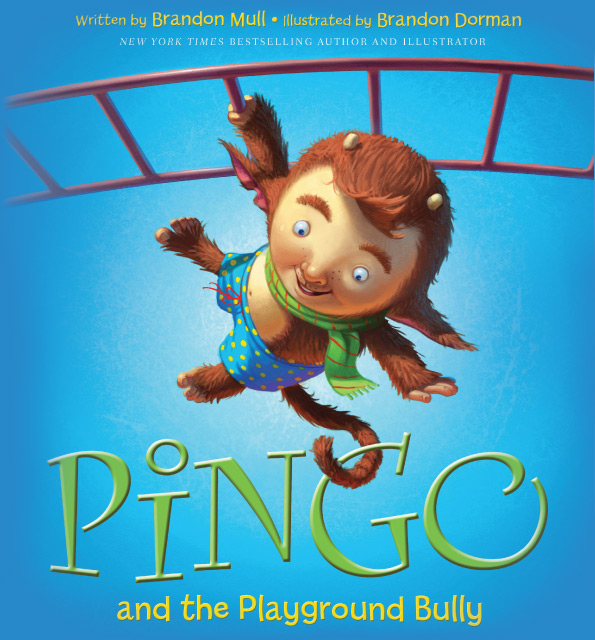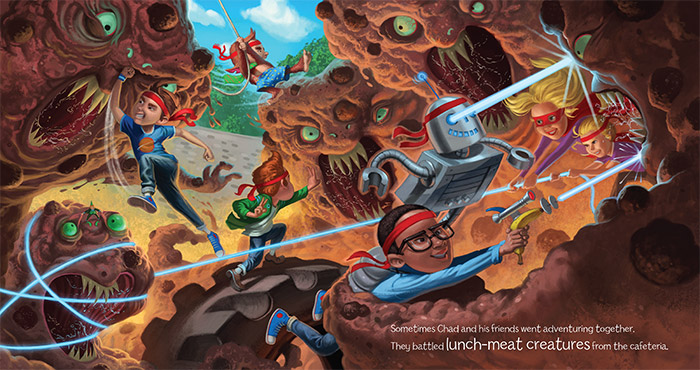 “PINGO AND THE PLAYGROUND BULLY,” by Brandon Mull and Brandon Dorman, Shadow Mountain, Oct. 9, 2012, hardcover, $17.99 (ages 4-7)
“PINGO AND THE PLAYGROUND BULLY,” by Brandon Mull and Brandon Dorman, Shadow Mountain, Oct. 9, 2012, hardcover, $17.99 (ages 4-7)
Chad is in second grade and often plays with Pingo, his imaginary friend, at recess. He’s not the only one with imaginary friends — Gary protects the galaxy with Sparky, his robot; Tiffany saves the day with Awesome Girl; and Dustin can hide Mr. Bob in his pocket.
Frequently, the four friends and their imaginary friends can be found adventuring together, battling lunchmeat creatures or hunting yard-duty-osaurus. Everyone thinks their imaginary friend is the best, and one recess they decide to have a contest to decide who is the smartest, strongest or sneakiest.
Poor Pingo, he doesn’t win any of the categories. But neither does Grunt, Jeremy the bully’s imaginary friend. They want to know why they weren’t included. Chad and his friends are terrified, but not Pingo, he has an idea. “Want to come on an adventure down the Amazon River with us?” he asks. Soon Jeremy and Grunt are part of the group and everyone is having fun.
Friendship and inclusion are the very present themes of “Pingo and the Playground Bully.” It’s a little in your face, but that’s to be expected to a certain degree with picture books. The illustrations are bright and have a Pixar-ish feel to them. And there’s lots of action in both the images and story.
My complaint comes with the introduction of Jeremy and Grunt. For a book about bullies, it sure takes a while for them to make an appearance — eight pages in a book with only 32. And once the duo appears — seemingly out of nowhere — they disappear again. Eight more pages come and go before they show up again. Better storyboarding may have solved this problem.
“Pingo and the Playground Bully” is still a fun book, and once actual interaction takes place with Jeremy and Grunt, a fine lesson appears as well. It’s also important to note the celebration of imagination throughout. The book is worth reading for that reason alone.

